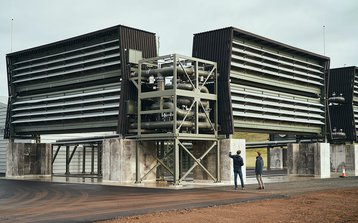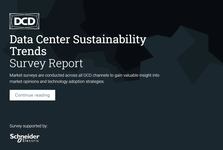Microsoft is expanding its partnership with Climeworks to remove 10,000 tons of carbon over a decade.
One of the largest direct air capture (DAC) deals to date, the agreement comes after Microsoft purchased the removal of 1,400 metric tons of carbon last year.
Climeworks pulls carbon dioxide from the air and turns it into stone underground. Fans suck huge amounts of air into the system. Chemicals react with the CO2, leaving nitrogen, oxygen and other gases to return to the atmosphere.
The chemical filters are then heated with renewable energy to release the CO2. This is then dissolved in water, and injected into basaltic rock 1,000m underground. Over two years, the dissolved CO2 crystallizes into a mineral that permanently holds it.
The 10,000 tons of CO2 emissions are roughly equivalent to the emissions of 62.5 US citizens over a decade.
Carbon capture technology has long been criticized by some as a distraction from emissions reduction efforts, a tool for fossil fuel companies to delay change, and too small to push the needle.
But, with efforts to reduce emissions occurring too slowly, the UN's climate panel found that removing billions of tons of carbon dioxide was now essential - along with drastic emissions cuts - if global temperature rises are to be kept below two degrees.
10,000 tons will not make a difference to a civilization operating in the billions of tons per year. The International Energy Agency estimates that in 2021 alone, just energy-related carbon dioxide emissions hit 36.3 billion tonnes.
Proponents of Climeworks and other DAC approaches admit such deals are in themselves not able to change our dire trajectory, but contend they are a crucial stepping stone in funding much more ambitious projects.
Climeworks's Orca carbon capture plant is capable of capturing 4,000 tons of CO2 per year, while its planned Mammoth facility expects to reach 36,000 tons per year. The company has set the ambitious goal of multi-megaton capacity by 2030, and gigaton capacity by 2050.
Microsoft, meanwhile, has promised to be carbon negative by 2030, and remove all of its historical emissions by 2050. That latter goal will involve technologies that do not yet exist, with the company promising to invest in helping develop such equipment.
The cloud and productivity giant has invested in Climeworks through its Climate Innovation Fund.
"Our experience in purchasing renewable energy shows that long-term agreements can provide an essential foundation for society's race to scale new decarbonization technologies," Lucas Joppa, chief environmental officer at Microsoft, said.
The company has also turned to carbon sequestration in the form of offsets - but that is also fraught with abuse, poor tracking, and unintended consequences. For example, a forest Microsoft used to offset emissions burned down in a climate change-induced wildfire.




